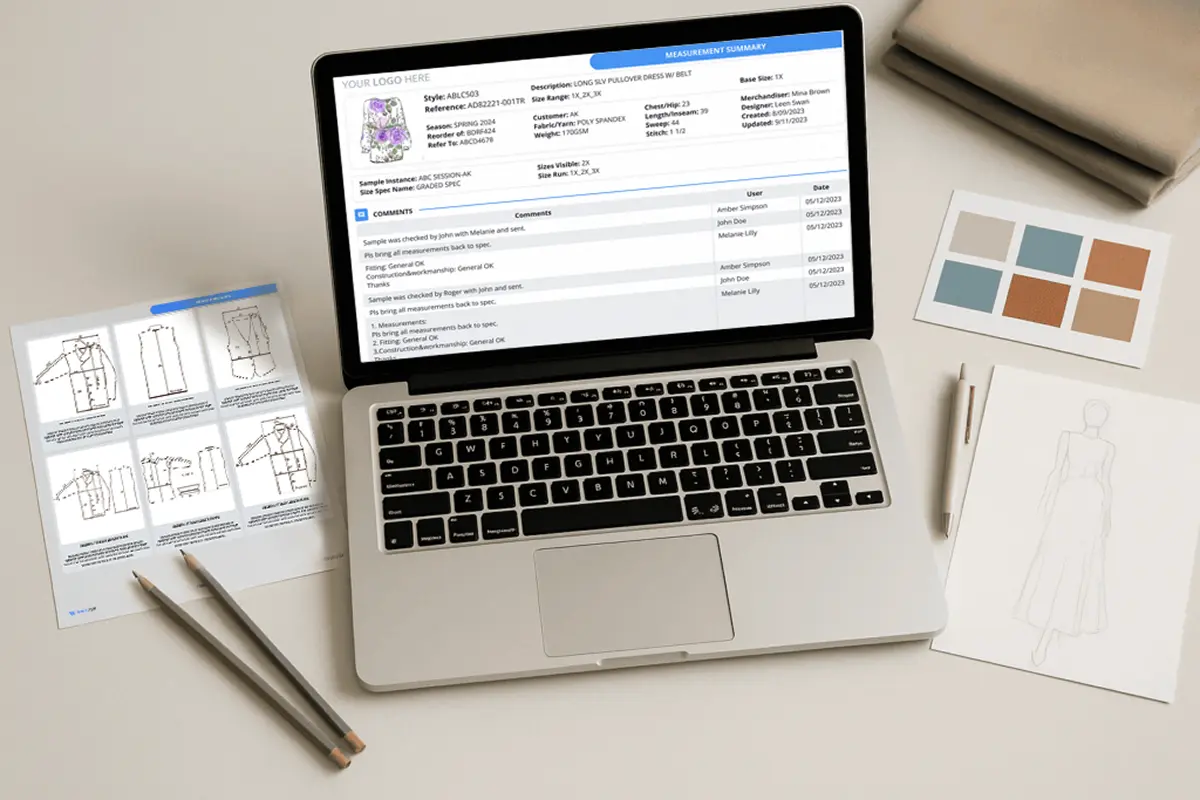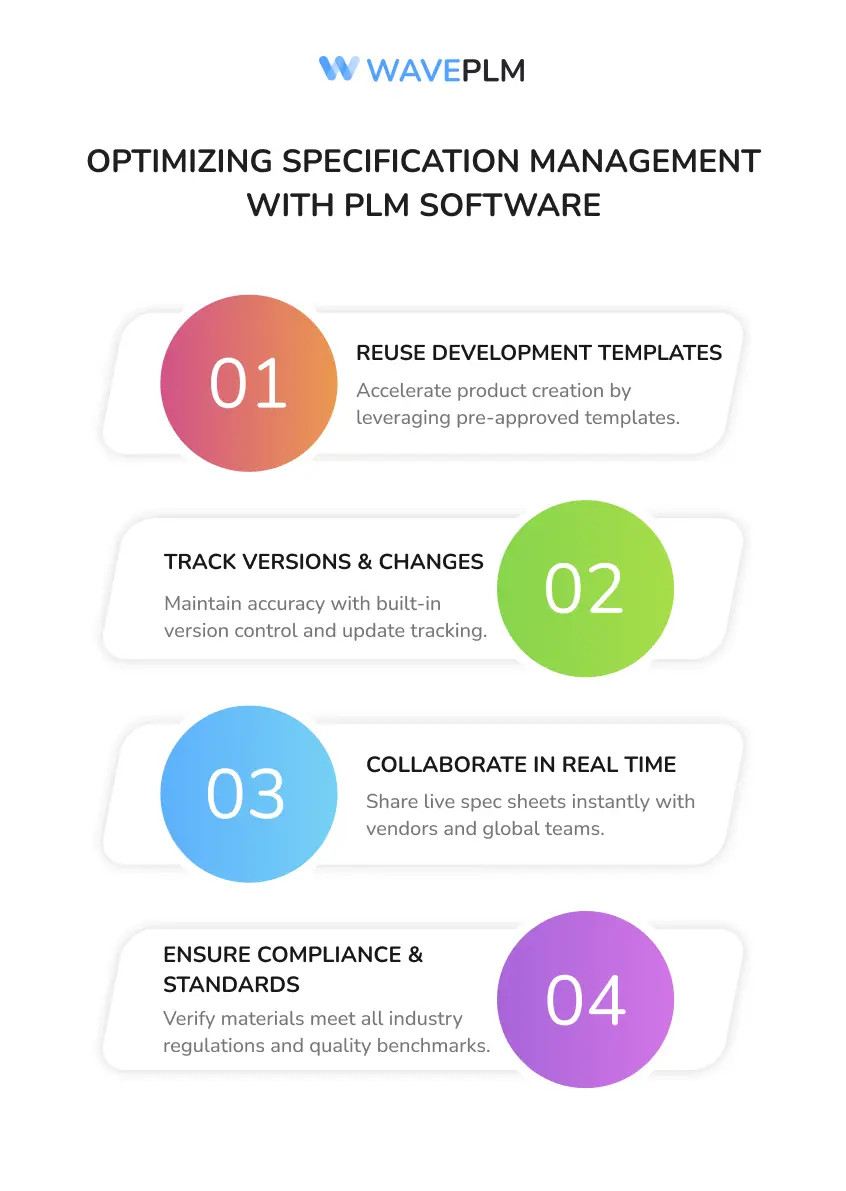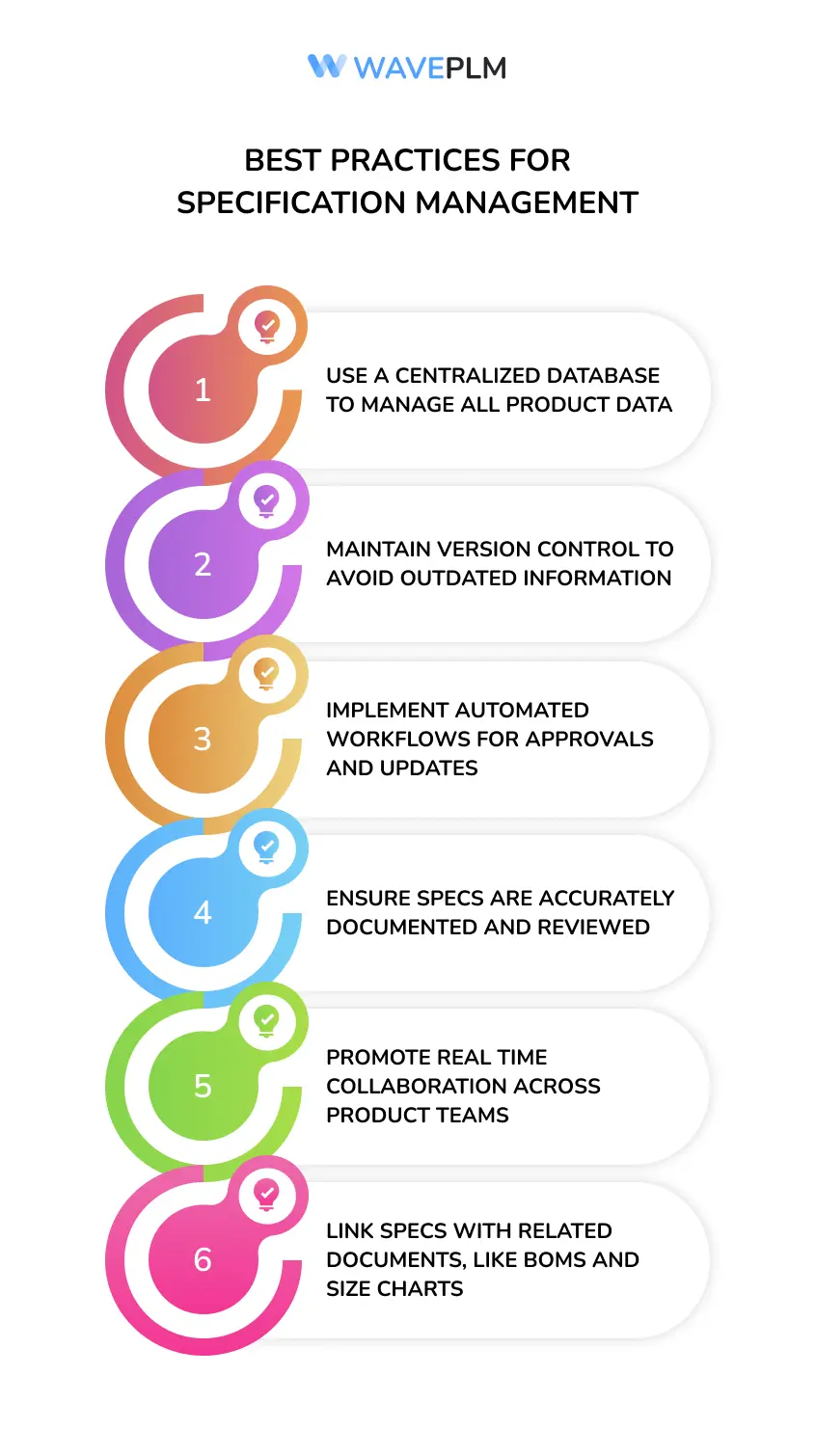
Specification management is one of the most important processes within the fashion industry. Without accurate specification data, groups can face costly mistakes, inconsistent quality, and even holdups in the product development process.
That is why product spec management software is being considered by modern-day brands in order to automate their workflows, meet standards, and work in tandem.
What Is Specification Management?
Specification management refers to the set of processes used to create, update, share, and maintain detailed product specifications. It ensures that all internal and external stakeholders stay on the same page during every stage of the product development process.
Specification sheets include everything from raw materials and size charts to construction details and regulatory requirements. These documents must remain accurately documented, up to date, and easily accessible to avoid version control issues and compliance risks.
Why Fashion Brands Need Specification Management Software
Modern fashion businesses deal with dozens or even hundreds of styles per season. Managing specifications manually through spreadsheets and PDFs is no longer efficient.
That’s where specification management software comes in.
Key Benefits of Using a Specification Management System
|
Feature |
Benefit |
|---|---|
|
Centralized Database |
One platform to store all the data in real time |
|
Automated Workflows |
Reduce manual input, improve accuracy |
|
Version Control |
Always access the correct version of a specification |
|
Enhanced Collaboration |
Enable internal and external stakeholders to work seamlessly |
|
Regulatory Compliance |
Meet compliance requirements with consistent documentation |
|
Quality Management |
Ensure final products meet quality standards |
|
Supply Chain Transparency |
Share specs with vendors and track changes |
Specification Management in PLM Software
A powerful specification management system is often built into modern PLM software. This enables product teams to connect specification sheets to calendars, materials, suppliers, and costings.
By centralizing product specifications, PLM becomes the single source of truth for every garment.
Elements of a Specification Sheet in PLM
|
Section |
Includes |
|
Style Overview |
Sketch, name, colorways, collection |
|
Product Specifications |
Measurements, tolerances, construction details |
|
Raw Materials |
Fabric composition, trims, thread, labels |
|
Compliance |
Certifications, country of origin, care label data |
|
Customer Feedback |
Comments from sales, marketing, or users |
|
Quality Checks |
Testing methods, performance results |
|
Related Documents |
Size charts, packaging specs, component breakdowns |
Why Accurate Product Specifications Matter
Product specifications impact the entire supply chain. From fabric selection to finished goods, specs guide production, sourcing, and quality checks. If specs are outdated, incomplete, or hard to access, the result is costly errors, wasted time, and damaged brand reputation.
With robust spec management software, brands ensure:
- Consistent quality across production
- Higher quality products with fewer defects
- Clear communication between design, production, and suppliers
- Informed decisions supported by complete data
Product Specification Management in Action
Let’s look at a real-world example.
A growing fashion label launches 40 styles per collection. Each style comes in 3 sizes and 2 colorways, totaling 240 variations per season. Without a structured specification management process, managing these specs would be a nightmare.
Using PLM software with integrated specification management tools, the brand can:
- Reuse templates to speed up the development process
- Track changes and updates with version control
- Share spec sheets with external stakeholders in real time
- Ensure materials meet industry standards and regulations
The result? Faster turnaround, enhanced customer satisfaction, and better team alignment.

Product Teams That Benefit from Spec Management
A solid specification software setup supports every stage of the product development journey.
|
Role |
How They Benefit |
|
Designers |
Quickly build tech packs using pre-set templates |
|
Developers |
Collaborate with factories using accurate, up to date information |
|
Compliance Officers |
Ensure products meet regulatory compliance and testing standards |
|
Quality Managers |
Track issues and prevent quality problems before mass production |
|
Suppliers |
Access the latest specs for raw materials and finished goods |
Best Practices for Specification Management
Here are key tips to improve your specification management system:
- Use a centralized database to manage all product data
- Maintain version control to avoid outdated information
- Implement automated workflows for approvals and updates
- Ensure specs are accurately documented and reviewed
- Promote real time collaboration across product teams
- Link specs with related documents, like BOMs and size charts

From Specs to Finished Goods
At every step of the product development process, having complete control over product specifications leads to better results. With the right specification management software, fashion brands can:
- Meet customer expectations
- Improve product quality
- Ensure regulatory compliance
- Enable supply chain traceability and transparency
- Make data-driven decisions that reduce waste
Conclusion: Better Specs, Better Products
In today’s competitive market, strong specification management processes are not optional—they’re essential.
Fashion brands that invest in reliable specification software gain a serious advantage. They reduce costly mistakes, increase efficiency, and deliver higher quality products that meet both internal goals and customer needs.
Wave PLM offers robust product specification management tools designed for fashion brands. Whether you’re managing 20 styles or 2,000, our system gives you the single source of truth you need.
FAQ
What is specification in product management?
It’s the detailed documentation of all aspects of a product, from materials to measurements, used to guide production.
What are the 4 types of specifications?
Design specifications, performance specifications, functional specifications, and regulatory specifications.
What is specification management?
It is the process of organizing, maintaining, and distributing product specifications across the supply chain.
What is the difference between COA and product specification?
A COA (Certificate of Analysis) verifies a product’s quality post-production, while product specifications guide how a product is made.
Does Wave PLM include spec management software?
Yes. Wave PLM includes a complete specification management system with version control, collaboration tools, and compliance tracking.





Leave a Reply